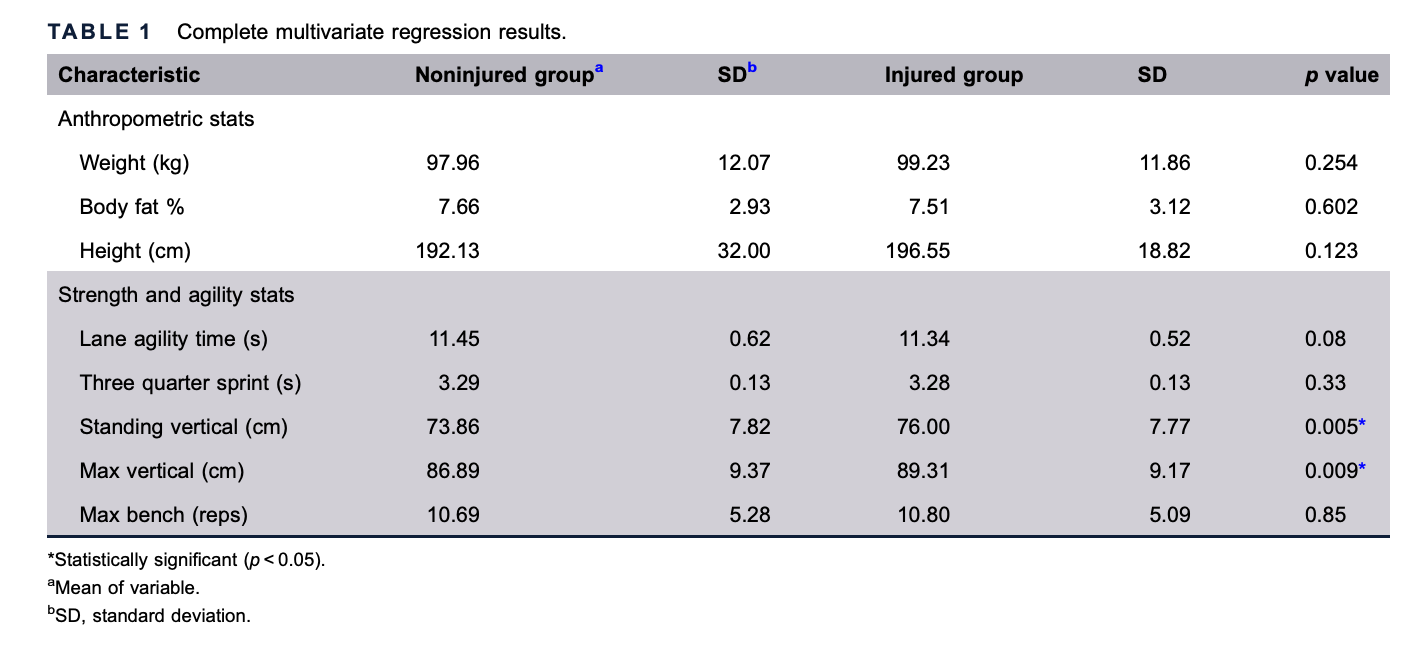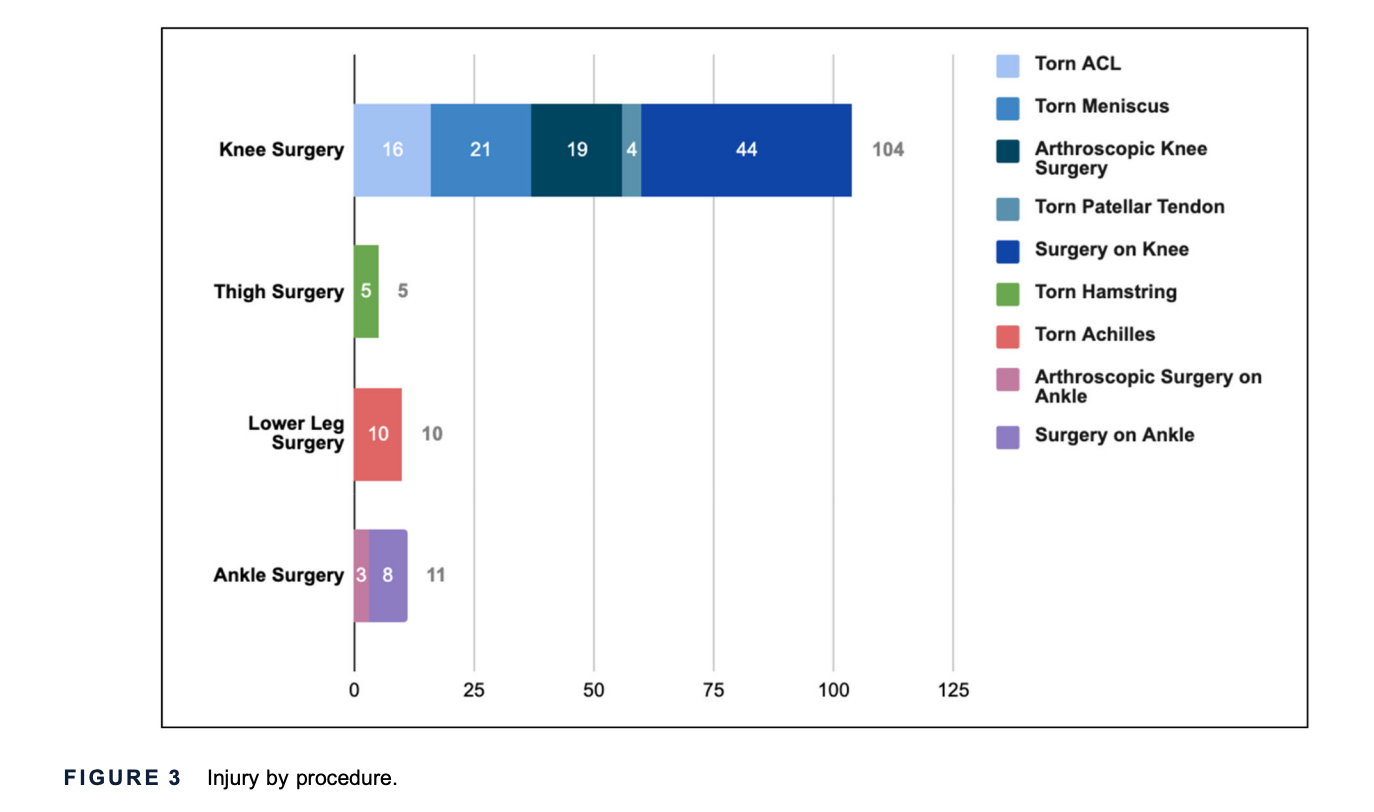For decades, the NBA Combine has been a showcase for elite prospects, where a 40-inch vertical can turn a fringe player into a first-round pick.
But what if those sky-high jumps also predicted who’s more likely to end up in surgery?
A new 2025 study explored that very question and found that NBA players who jumped higher at the Combine were also more likely to undergo lower limb surgery during their careers.
Let’s break it down.
The Study
Researchers analyzed NBA injury and Combine data spanning 10 years (2010–2020).
They looked at:
- 130 NBA players who underwent surgery for lower limb injuries
- 1,220 players who did not require surgery
Then they compared each group’s NBA Combine results.
Key Findings
Vertical Jump Scores Were Higher in Injured Players
Standing Vertical:
- Injured: 76.0 cm (29.9 in)
- Healthy: 73.9 cm (29.1 in)
Max Vertical:
- Injured: 89.3 cm (35.2 in)
- Healthy: 86.9 cm (34.2 in)
Both differences were statistically significant (p < 0.01)

No Differences in Other Combine Metrics
- Height, weight, body fat, sprint time, agility, and bench press had no predictive value
Most Surgeries Were Knee-Related
- 80% of injuries were to the knee
- Common procedures: meniscus, ACL, and general arthroscopy

Why Might This Happen?
Jumping higher isn’t just about power, it’s also about the forces your body has to produce and "absorb" on the way down.
Higher flyers may create:
- Greater ground reaction forces on landings
- More stress during cutting and deceleration
- Increased eccentric demands on the knees and lower leg
Over time, that stress can accumulate, leading to structural damage and, in many cases, surgery.
Correlation ≠ Causation
This is a retrospective, correlational study, meaning we’re looking backward to see if a relationship exists between two variables: vertical jump scores and future surgery.
But it’s important to note:
- Just because high jumpers were more likely to get injured doesn’t mean jumping high caused the injury.
- Other factors—like playstyle, position, minutes played, and biomechanics—may play a critical role but weren’t included in this analysis.
- Combine scores capture a moment in time. Career injury risk is shaped by years of training load, movement quality, and recovery.
Still, this research opens the door to utilizing existing data in more intelligent ways to anticipate and mitigate risk.
Coaching Implications
If you work with basketball players or any jumping athletes, this study should give you pause.
It’s not a reason to avoid jump training.
But it is a reason to:
- Assess landing mechanics and knee control
- Strengthen eccentric capacity and deceleration skill
- Monitor jump load and recovery more closely for high flyers
Vertical jump isn’t just about power; it may be a signal for injury risk.
Important Distinction
This study doesn’t say that jumping high causes injury.
But it does offer the first large-scale evidence that vertical leap scores at the NBA Combine correlate with future surgery.
It’s a reminder that performance and durability aren’t always aligned and that high performers may need additional screening and risk mitigation.
I hope this helps,
Ramsey




